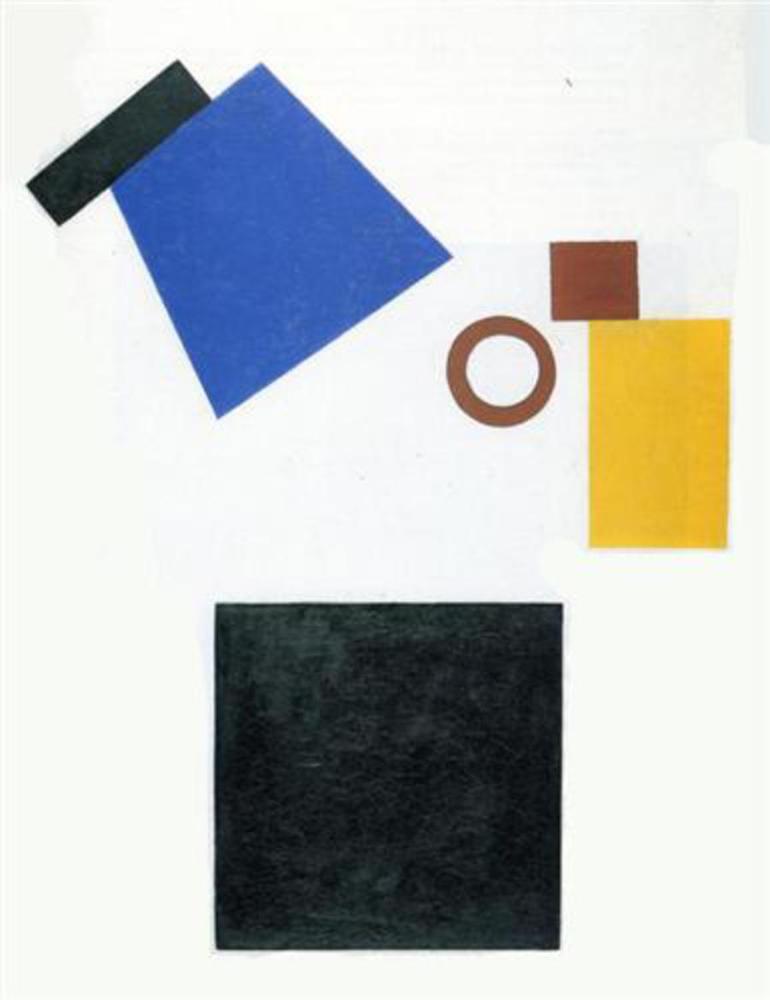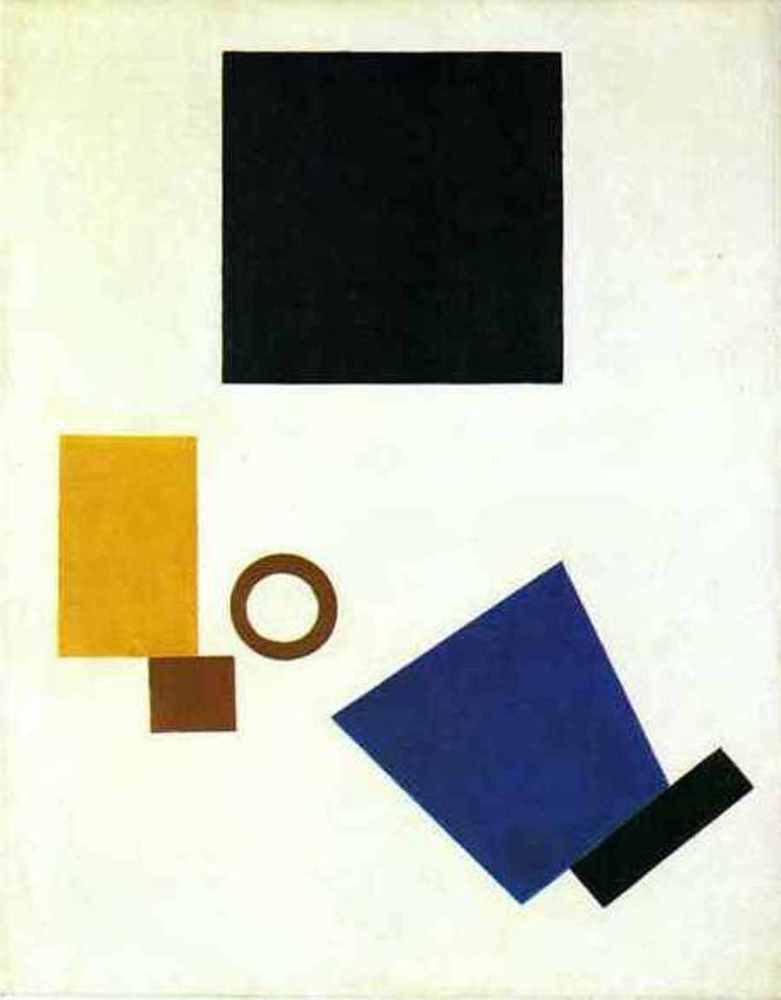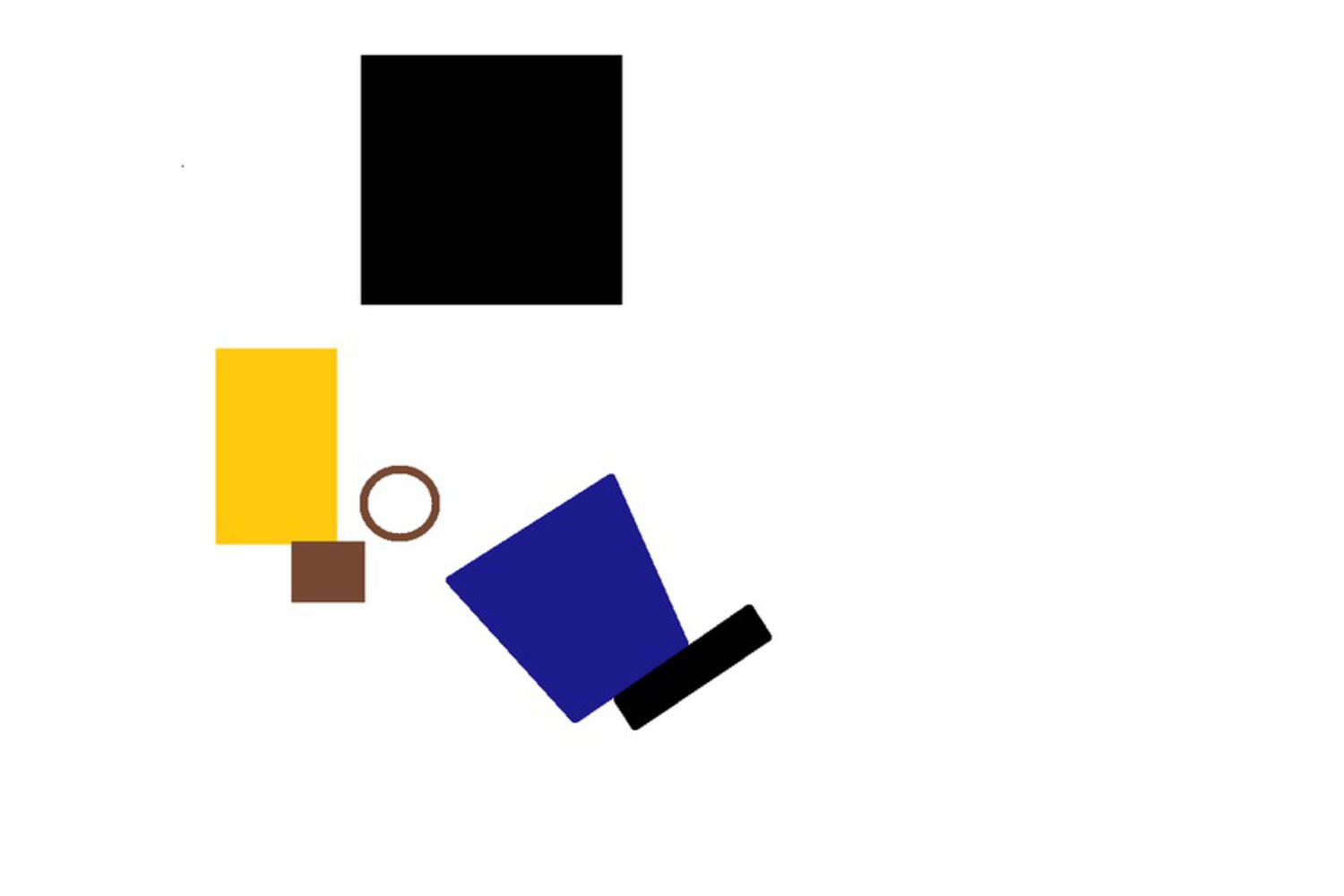Artist - Kasmir Malevich
Kasmir Malevich is a pioneer of geometric abstract art and orginator of the the avant-garde Supermatist movement. He concentrated on the exploration of pure geometric forms (squares, triangle, and circles) and their relationships to each other and within the pictorial space. His Supermatist compositions proclaims that paintings were composed of flat, abstract areas of paint, they also served up powerful and multi-layered symbols and mystical feelings of time and space. "No phenomenon is mortal," Malevich wrote, "and this means not only the body but the idea as well, a symbol that one is eternally reincarnated in another form which actually exists in the conscious and unconscious person."
Work



